Must-haves for storing sterile instruments
Most Central Service/Sterile Processing & Distribution (CS/SPD) departments today must contend with storage spaces designed and built decades ago, when the number and variety of surgical instruments was much lower. Even those that have updated storage areas and equipment over the years find their upgrades becoming obsolete as their surgical services and volume of procedures continuously grow.
“There has been an increase in the number of instrument trays used per procedure,” said Cory Ezell, North America Sales Director for Belintra, partnering with O&M HALYARD. “For instance, a procedure five years ago may have only required three instrument trays. That same procedure today may require five trays to accommodate specialized products, which would be an increase of 40%. The SPD may not have enough space to accommodate the increased number of trays.”
Adequate storage space and equipment designed to protect the integrity of sterilized items are important in many different ways. From a workflow perspective, the ability to easily find what is needed for a case increases efficiency in the CS/SPD and enables department professionals to support on-time procedure starts.
“The lack of space is always a big challenge for the SPD,” Ezell added. “We’ve seen hospitals go through construction of new operating room (OR) suites or remodeling without thinking about the needs of sterile storage. Often the footprint of the SPD is reduced to the point that it cannot accommodate the number of sterilized trays needed to support the number of OR procedures being conducted.”
Maintaining the sterility of items, through intact sterile wrap and/or properly sealed containers, prevents the need for reprocessing, the risk for case delays, and most importantly, the risk for contamination and subsequent patient infections.
For example, the Hospital for Special Surgery in New York was experiencing approximately 30-40 holes per day before implementing a new solution to protect wrapped trays, which reduced the number of holes to an average of five per week (see full story in this article).
Then there are staff safety considerations as well. Poorly stacked trays and containers, the need to place heavy trays high up on shelves due to space constraints or having to bend down to pick weighty trays up off from lower shelves all put CS/SPD professionals at risk for injury. Ease of access makes it safer and easier for staff members to do their jobs. And with the critical role that the CS/SPD plays in patient care, healthcare facilities can’t risk losing their talent for any time period.
In recognition of the importance of safe, sufficient and sustainable storage in the CS/SPD, healthcare facilities are investing in this area, and suppliers are delivering new innovations to support efficiency, safety and quality goals.
The Hospital for Special Surgery (HSS) in New York has been ranked by U.S. News & World Report as the number one hospital in the nation for orthopedics for 12 years in a row. Its surgeons perform more than 32,000 surgical procedures annually, including more hip surgeries and knee replacements than any other hospital in the U.S.
Orthopedic surgical trays are notoriously heavy, straining the barriers of sterile wrap. According to Richard Ortiz, CST, Senior Director, Central Sterile Processing (CSP) and Durable Medical Equipment (DME) for HSS, holes in wraps were a “huge issue” for the hospital.
“It led to CSP needing to reprocess trays and delays in the OR. Sometimes the hospital did not have extra trays because they were loaner trays, and this delayed cases,” Ortiz explains. “We used corner guards and still do but most of the rips/tears/holes are found in the spine of the tray, not the corners.”
With approximately 30-40 holes in wrapped trays per day, Ortiz and his team knew they had to take action. They implemented Tray Belts from Cygnus Medical, which provide a cushioned barrier from the many sharp edges that can easily rip and tear sterile wrapping. A CS/SPD staff member applies a belt to the tray after wrapping it, protecting it from the external damage that can occur during sterilization, storage and transport.
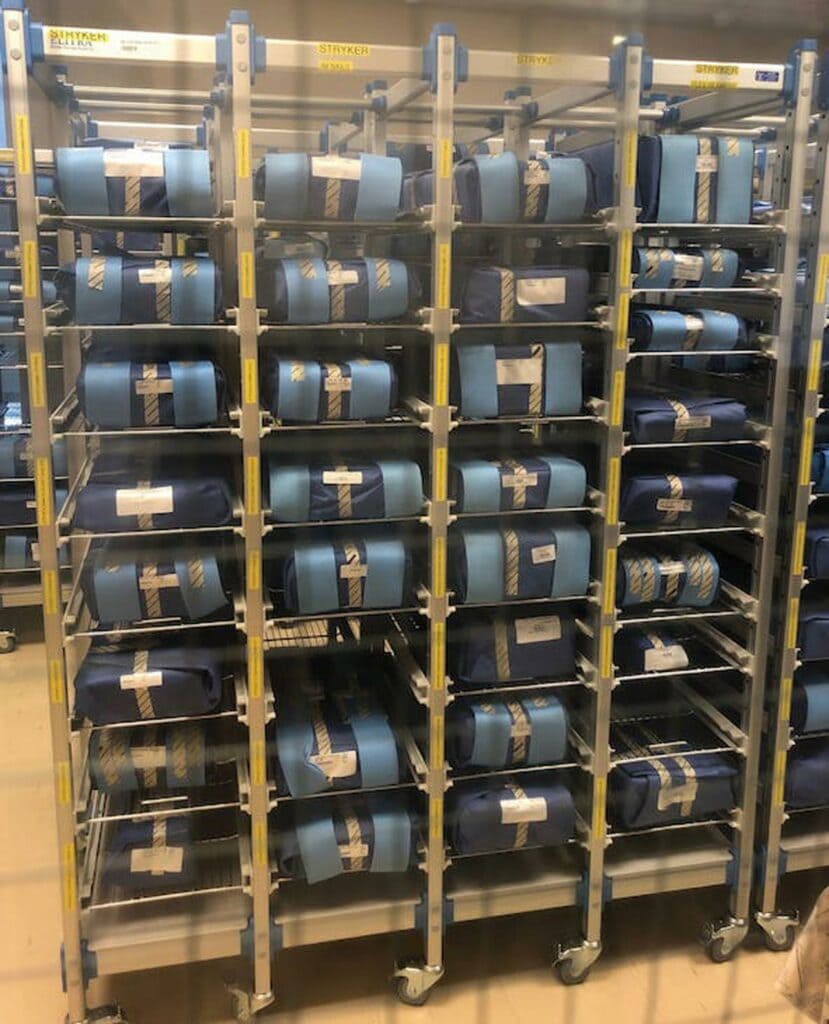
“We now average five holes per week. So, it was a significant difference,” said Ortiz. “We can rest easier with the use of the Tray Belts knowing the tray is protected from rips, holes and tears.”
Ortiz says the response from the OR staff and surgeons has been extremely positive. It has enabled both the CS/SPD and OR teams to be more efficient. When HSS first began using the Tray Belts on select trays, they found surgeons questioning trays that did not have the belts. This prompted the hospital to expand belt use on all trays processed through the CS/SPD.
“If the surgeons are noticing it, then it is a win,” said Ortiz. “It is definitely a win for operations. The Tray Belts pay for themselves.”
When asked for advice by other CS/SPD teams when implementing the Tray Belts, Ortiz says communication and collaboration between the CS/SPD and OR teams is important to compliance. The Tray Belts are a “visual cue” to the staff. They provide a reminder that the trays need to be handled carefully to prevent rips/tears/holes.
As Aesculap CSD Lead Consultant Juan Ramos, BSBA, CRCST, CIS, CHL, LGBC, points out, rigid containers serve as an alternative to sterilization wrap when it comes to protecting the integrity of sterilized instrument sets.
“Sterilization containers allow for the proper organization, packing and appropriate sterilizing agent penetration while maintaining the integrity of the package from sterilization until use in the OR,” said Ramos. “Additionally, containers facilitate standardization, reduce waste and help decrease surgery setup times.”
The Aesculap SterilContainer System features an extensive range of container sizes and heights to meet all of a CS/SPD instrument sets requirements. Its lightweight aluminum construction is 15% to 20% lighter than leading competitors, helping departments meet the Association for the Advancement of Medical Instrumentation (AAMI) 25lbs weight recommendation. The 90° Stop handle protects staff from finger injuries during handling, and the single motion latch design secures the container quickly to reduce time and hassle in CS/SPD and OR.
“Sterilization containers are one of the best tools available to the nursing team to prevent nosocomial infections,” Ramos added. “Adherence to the manufacturers’ instructions for use (IFU) is paramount for sterilization containers’ effectiveness.”
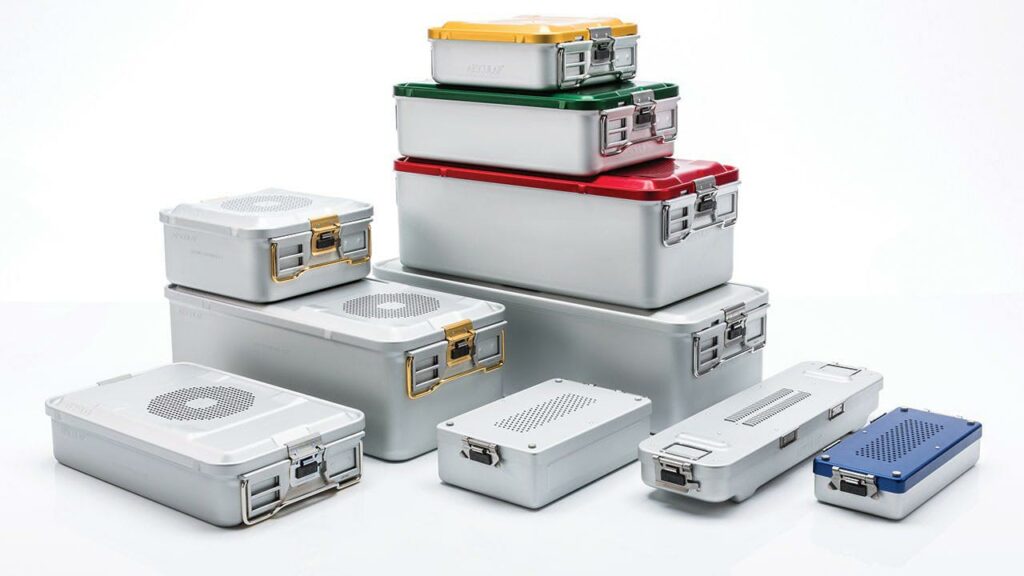
While huge instrument tray sets are the most visible challenge to space constraints, it is important to consider all of the other supplies required in the OR and other procedural areas.
One example is surgical skin markers. Preventing mistakes in surgery is one of The Joint Commission’s 2021 Hospital National Patient Safety Goals. The agency recommends marking the correct place on the patient’s body where the surgery is to be done to make sure that the correct surgery is done on the correct patient and at the correct place on the patient’s body.
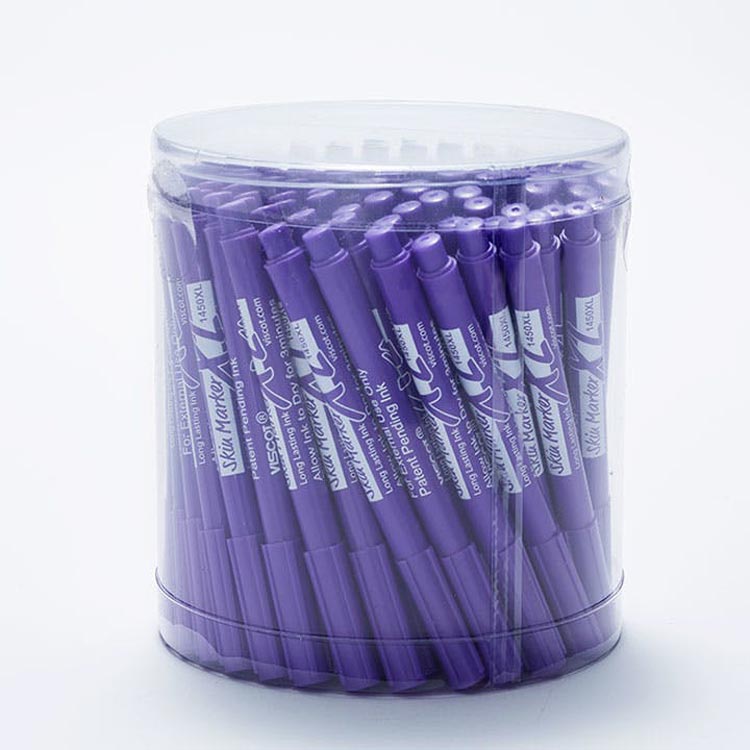
Nina Morales, Marketing Associate for Viscot Medical, says the company packages several of its non-sterile marker product lines in clear, plastic containers that are easy to store, identify and access.
“The cylindric plastic containers are more compact and have less wasted space internally than boxes,” said Morales. “The containers have a smaller footprint than most boxes, so they take up less space on a shelf or table and can be easily stacked. They’re clear, making the stock easily visible. There’s less concern for ordering too soon or too much when you can see exactly how much you have left.”
UPMC Shadyside Hospital in Pittsburgh offers a wide range of surgical procedures, including robotics, as treatments for many diseases and conditions. U.S. News & World Report consistently ranks the hospital among the nation’s best hospitals in many specialties.
Storing instruments and supplies for a broad range of surgical specialties and accessing what the OR team needs was a significant challenge for the hospital’s CS/SPD team.
“It was difficult to put trays in the storage area, which impacted our workflow greatly,” said Tiffany McCarthy, CST, CRCST, CHL, CIS, CER, Supervisor Central Sterile Processing, UPMC Shadyside Hospital. “Use of an instrument tracking system to scan trays to the shelf was difficult. There were challenges in keeping the tray inventory organized by service and being able to add new inventory. The quality of the instrument wrap was constantly compromised by the wire rack of the shelving.”
Because of space constrains in the CS/SPD, the team had no choice but to store trays in the OR. They also lacked adequate space to store case carts, which compromised case cart picking. According to McCarthy, her team spent one hour each day clearing aisles of carts, supplies and other items before case cart picking could begin.
McCarthy and the CS/SPD department director, Michael Loadman, looked at several different storage system options and met with different vendors. The challenge was finding a solution that would fit within the department’s storage footprint. As McCarthy explains, there were not many options that would accommodate their physical space. Ceiling height and columns in the room made the different configurations unusable.
“DSI agreed to conduct small trial space to see the impact of its storage units,” said McCarthy. “We were pleasantly surprised on how spacious the shelving unit was and how we gained usable space. Since the shelves are adjustable there is no longer dead space in between shelves. The area looks clean and organized. We were able to label each tray shelf individually. There was no longer stacking of trays which made us regulatory compliant. And DSI’s solid shelves prevented holes in tray wrap.”
Parallel to the DSI trial, the CS/SPD and OR teams collaborated on an analysis of instrument usage. They were able to reduce inventory of seldom-used trays by 11%, allowing for more available storage space. They reallocated the extra space to case cart storage and expanded aisle space, to allow greater efficiency in case cart picking.
When asked what advice she has for CS/SPD teams that are evaluating shelving options, McCarthy recommends starting with a test area.
“If unsure about if this is the right shelving unit for you, trial a spot in the department and see if it works,” she said. “And if you like it, do it section by section. Therefore, you don’t disrupt your SPD while the transitioning is happening. This gives your staff time to adjust to the change, and gives a chance to go through inventory and decide if every tray is needed or can you dispose of some to give future trays a home.”
“If choosing the DSI shelving unit, take into account the heaviness of your trays. Don’t store heavy trays on top of shelving,” McCarthy added. “Try to think about your employees and how tray size could affect them getting it safely. Think about your pick tickets and see if you get trays near each other so when picking cases, it would be quicker and more efficient for staff, especially in emergencies.”
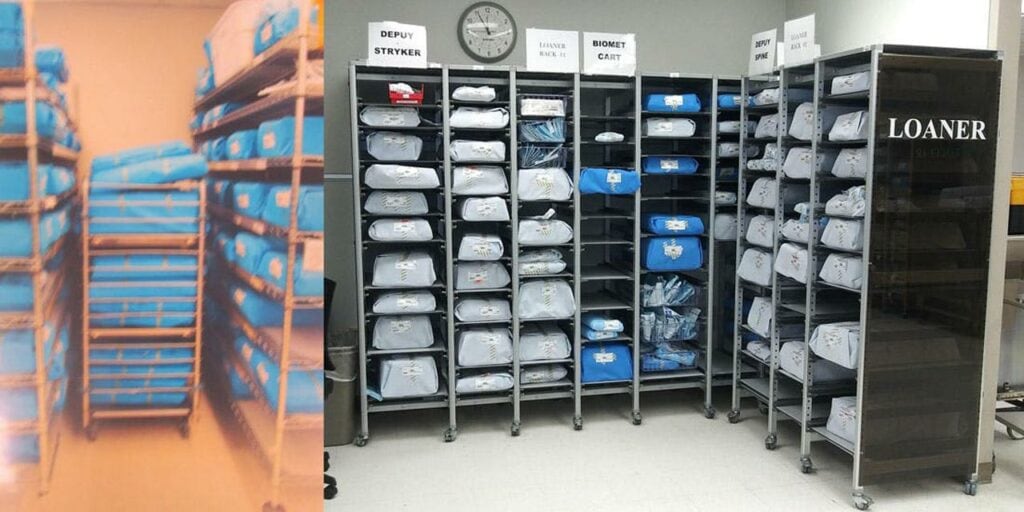
Two options for those CS/SPD short on storage space are modular or mobile instrument and supply storage units. For example, Ezell says Belintra’s UBeFlex modular storage system is uniquely designed to overcome challenges by providing extensive possibilities of configurations using various widths and a combination of shelving sizes to optimize available space. They also offer a full line of closed and open transport options for transporting sterile and non-sterile trays.
“Every space is different. For example, one of our customers in Texas was able to store 1,500 trays in 450 square feet,” he said.
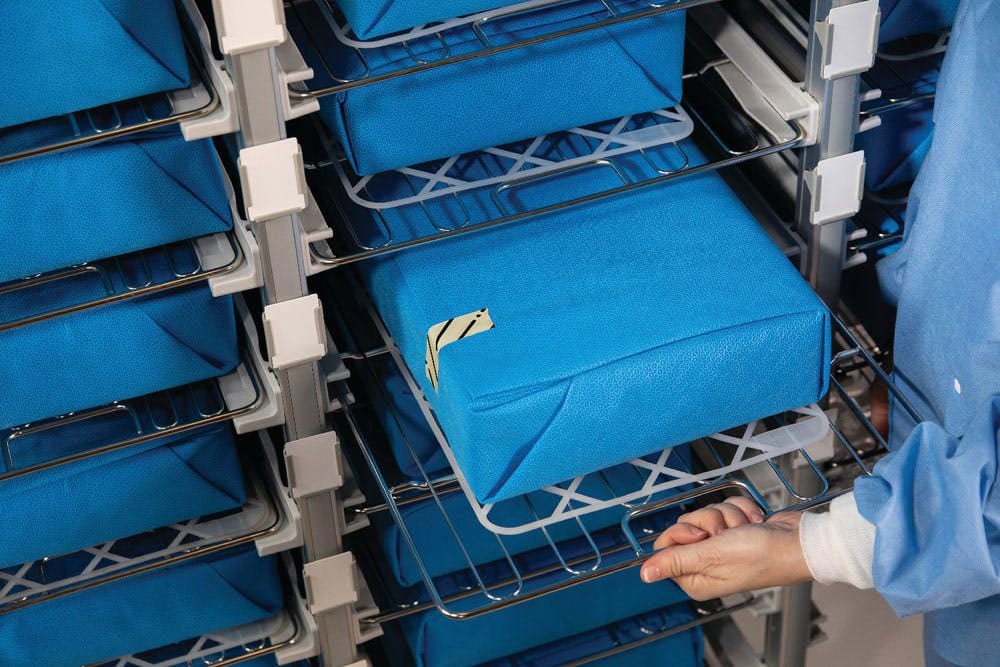
Belintra also offers mobile storage options to protect vendor trays during storage and transport. As Ezell explains, trays not utilized in the procedure can be wheeled back to the storage area or staged for pick up.
“Just as important as the product itself is the team who provides assessment and installation,” he said. “Our trained and certified installation team leverages their firsthand experience working in the SPD to set your team up for success. Our team can be contacted for a no charge, onsite assessment.”
Poorly stored and organized instrument trays can result in a “snowball effect,” ultimately compromising patient safety and care,” Ezell explained.
“If trays either don’t have a home, are poorly organized, labeled illegibly or are missing, this can impact staff time and satisfaction as they struggle to find the correct tray,” he said. “This can bleed into the OR in the form of delay times or worst-case scenario, a rescheduled procedure. With the cost of an OR minute being estimated at between $22-$133 a minute, that is not something that any facility would want to incur. As you could imagine, this leads to additional staff and physician dissatisfaction.”
“From the patient’s perspective, if the physician is having to use a tray of instruments that they are not familiar with because their regular set cannot be found or is compromised, it could potentially lead to a medical error. If the tray needed cannot be found, the procedure may be delayed or cancelled, which is less than ideal, especially in the case of an emergency,” Ezell said.
When asked how a CS/SPD can overcome these challenges, even leveraging its existing storage space, Ezell recommends they ask themselves the following questions/take the following steps:
• Understand utilization: What is the growth plan for your facility? Will you be adding surgeons or specialties? If so, do you have enough space that is optimized to accommodate the number of trays needed?
• Determine an accurate instrument tray count: What are you using today and what are your planned future purchases? Be sure to account for the percentage of vendor trays that are in use. Are you considering adding vendor trays to consignment? Will they live at the facility full time or only be brought in at the time of procedure?
• Analyze and adapt workflow: Develop a workflow to minimize the number of touch points for each instrument tray. It is important to understand the flow between decontamination, sterilization, storage and transport to the OR and identify any opportunities in the process. The entire puzzle must be reviewed, not just a single piece.
• Maximize your footprint: Ezell says he has seen redesigns in which the CS/SPD was one of the first areas to be cut regarding space and they ended up with less room than expected. He notes that there are options to maximize dead space or the air space between each rack to store the number of trays needed.
“It’s important to consult with experts with SPD experience who understand the potential pitfalls and can aid in construction and design,” said Ezell. “Ideally, these experts are brought in to help before blueprints are even drafted to assess current workflow, and understand future goals and growth in order to best suggest space requirements moving forward.”
1. 2021 Hospital National Patient Safety Goals, The Joint Commission, https://www.jointcommission.org/-/media/tjc/documents/standards/national-patient-safety-goals/2021/simplified-2021-hap-npsg-goals-final-11420.pdf
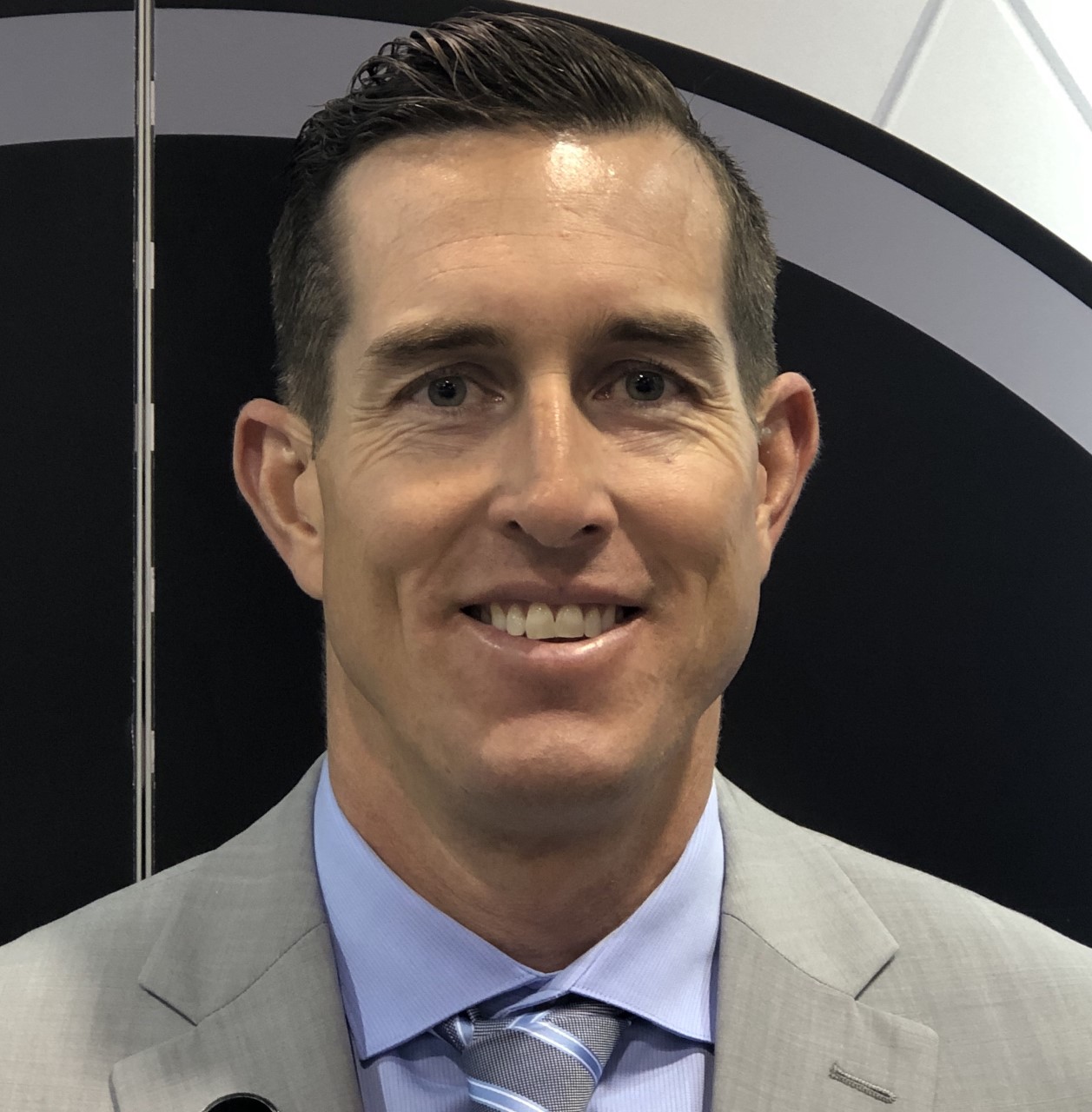
With 21 years of sales management, marketing, P&L responsibility, business development, national account, and channel management responsibilities under his belt, Ian has established himself as a high achiever across multiple business functions. Ian was part of a small team who started a new business unit for Stanley Black & Decker in Asia from Y10’ to Y14’. He lived in Shanghai, China for two years, then continued to commercialize and scale the business throughout the Asia Pacific and Middle East regions for another two years (4 years of International experience). Ian played college football at the University of Colorado from 96’ to 00’. His core skills sets include; drive, strong work ethic, team player, a builder mentality with high energy, motivator with the passion, purpose, and a track record to prove it.